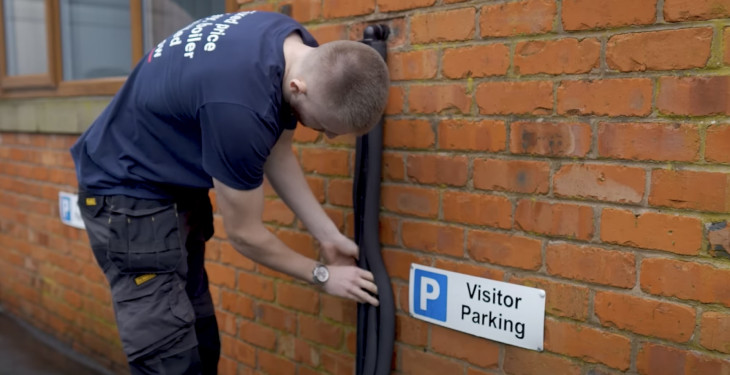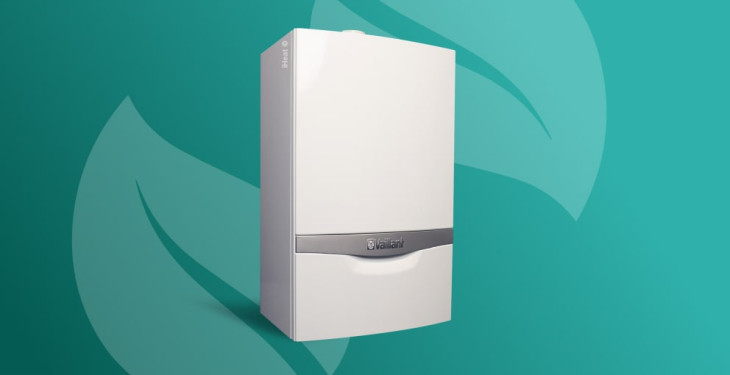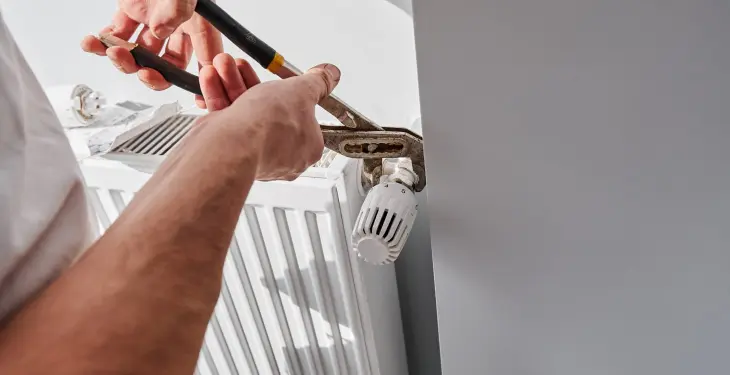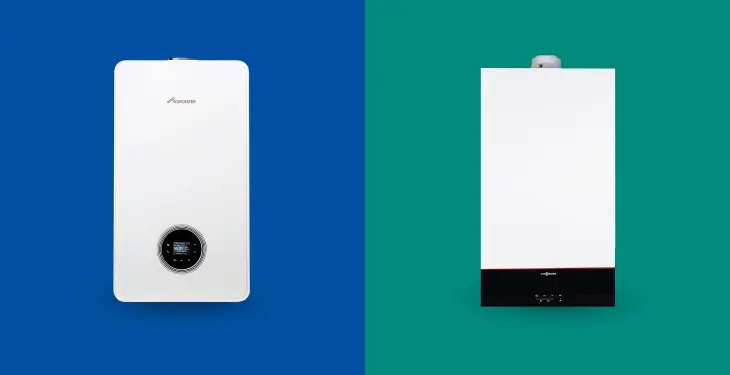

Written by Stephen Day
Gas Safe Engineer
Updated: 14th October, 2025
Facing an Ideal L2 boiler error code? iHeat, an online boiler installation company, explains its causes, steps to fix it, why a qualified engineer is critical for the task, and why upgrading to a new boiler could be beneficial.
Get a new boiler quote, save up to £550 per year (0% APR available).
In today's modern world, where homeowners have the opportunity to maintain comfort and convenience through a range of automated systems, boilers have become an essential aspect of that domestic ease.
However, these useful devices come with their share of issues, and boiler error codes are one of them.
Amongst many error codes, the Ideal L2 boiler error code seems to cause significant confusion among homeowners.
If you own an Ideal boiler and have stumbled upon the L2 error code, there's no need to worry.
As an online boiler installation company, iHeat is dedicated to providing homeowners with useful information to tackle such boiler-related issues effectively.
Get a quote in 60 seconds, fitted as fast as next day!
0% APR finance available.
Boiler error codes are specific alphanumeric indicators displayed on a boiler’s control panel to alert users about potential issues within the system.
These codes are part of the boiler's diagnostic system, designed to help identify the nature of the problem quickly, enabling more efficient troubleshooting and repairs.
Understanding boiler error codes is crucial for maintaining the optimal operation of your heating system.
Recognising these codes helps homeowners and technicians diagnose issues early, potentially preventing minor issues from escalating into costly repairs. It also ensures the boiler operates safely and efficiently.
The Ideal boiler L2 fault code indicates a flame loss in the boiler, meaning the system tried to ignite or re-ignite but failed.
This can happen for various reasons, including blocked burners, gas supply issues, faulty ignition leads, or problems with the flame detection electrode.
Gas Supply Issues: Interruptions or low pressure in the gas supply can prevent ignition.
Faulty Ignition Components: Worn out or malfunctioning ignition leads or electrodes.
Flue or Air Supply Blockages: Obstructions in the flue or air inlet can affect combustion.
Control Board Problems: Electrical faults that disrupt the ignition sequence.
Common signs include:
The boiler failing to fire up and provide heat.
Frequent resets and lockouts.
Hearing the ignition attempts without the boiler lighting.
Some checks and fixes can be performed DIY, such as ensuring there are no obstructions in the flue and that the gas supply is working correctly.
Resetting the boiler using the manufacturer's instructions might also resolve the issue temporarily.
If basic troubleshooting does not resolve the L2 fault code, or if you’re unsure about any procedures, it's advisable to call a professional. Working with gas appliances without proper training can be dangerous.
Yes, contacting a Gas Safe registered engineer is necessary for resolving the L2 fault code. These professionals are certified to safely repair gas boilers and will ensure the work meets safety and efficiency standards.
A Gas Safe engineer is a technician who is registered and certified to work safely and legally on gas appliances in the UK. Their expertise is crucial for ensuring all repairs and installations comply with national safety regulations.
Repairing an L2 fault code typically costs between £150 and £300, depending on the underlying issue. Factors affecting the cost include the complexity of the fault, parts required, and the engineer’s call-out charge.
Severity of the Issue: More complex problems require more time and expensive parts.
Location: Rates can vary significantly across different regions.
Urgency: Emergency call-outs may incur higher charges.
Understanding and addressing boiler error codes promptly can help maintain your boiler’s efficiency and safety, potentially saving you from more significant expenses down the line.
Deciding whether to repair your existing boiler or invest in a new one involves several factors. Here’s how to determine the best course of action.
Age of the Boiler: If your boiler is close to or has surpassed its typical lifespan (usually around 15-20 years), it might be more economical in the long run to replace it rather than continuing to pay for frequent repairs.
Frequency of Breakdowns: Frequent malfunctions are a sign that your boiler is becoming less reliable. Regular breakdowns not only increase the cost over time but also indicate that the system might be nearing the end of its useful life.
Cost of Repairs: Compare the cost of repairs to the price of a new boiler. If the repair costs are approaching 50% of the cost of a new boiler, it’s generally more cost-effective to replace it.
For a detailed breakdown of what you can expect to pay, see our full guide on new boiler cost, including average prices and installation options across the UK in 2025.
Energy Efficiency: Older boilers often operate at lower efficiency levels. A new, high-efficiency boiler could significantly reduce your heating bills, making it a worthwhile investment.
Safety: If there are any safety concerns with your current boiler, such as risks of carbon monoxide leaks, replace it immediately.
Boilers typically have a lifespan of about 15-20 years, though this can vary based on the model, maintenance, and usage patterns.
Regular servicing can extend a boiler’s life, but as it ages, it may become less efficient and more prone to breakdowns. Replacement is generally recommended when:
The boiler is beyond repair.
It no longer meets your heating needs.
You’re facing expensive repairs.
There are consistent issues with boiler safety.
You want to upgrade to a more energy-efficient model.

The condensate pipe, responsible for carrying waste condensation from the boiler to an outside drain, can freeze during cold weather.
This blockage can cause the boiler's ignition process to fail, resulting in the L2 error code.

Ignition leads and electrodes play a pivotal role in firing up the boiler. If they're faulty or have worn out over time, the boiler might fail to ignite, leading to the L2 error.
A boiler requires an adequate gas supply to ignite properly. If there's a gas supply issue or if the gas flow to the boiler is inadequate, it can lead to the boiler failing to ignite, causing an L2 error code.

You can attempt to thaw the frozen condensate pipe. Using a hot water bottle, a heat wrap, or a warm cloth, you can gradually melt the ice within the pipe.
However, remember to be cautious during this process. If you're unsure or uncomfortable, it's best to call a professional.
If these steps fail to resolve the issue, it's wise to contact an engineer who can safely and efficiently diagnose and fix the problem.
Combis or combination boilers, combine all components and aspects of a heating system (central heating and hot water production) into one succinct and powerful unit.
Their economic size, quick flow rates and dual functionality means combis are extremely efficient and effective when heating a multitude of property sizes, being best suited for small to medium sized homes with 1-2 bathrooms.
If you’re considering a system upgrade, our 2025 guide on what is the best combi boiler compares leading models for performance and efficiency.
System boilers perform best in homes with a high hot water demand, specifically either larger properties with a higher number of residents or properties with two or more bathrooms.
System boilers store hot water in a separate cylinder which provides constant flow access but requires additional (minimal) storage space.
System boilers can service multiple flow outlets at one time, meaning no one in a larger home would be standing around waiting for a shower.
A heat only boiler provides the heat for a home's central heating system and hot water cylinder. A heat only boiler is suited to servicing larger properties with multiple bathrooms/radiators or a business premises with a high water demand.
Heat only boilers do require sufficient installation space within a property, as they use two storage tanks (feed & expansion) as well as the aforementioned hot water cylinder.
Although a combi is generally considered more space saving, a modern heat only boiler is still compact and can supply more bathrooms with hot running water than a combi can.
Installation Type | Price (inc VAT) | |
Combi to combi swap | £1,845 | |
System to combi conversion | £2,499 | |
New boiler install | £2,899 | |
Back boiler to a combi | £3,299 | |
System to system | £1,945 |
Coming across an error code like the Ideal L2 on your boiler can be quite daunting, but having a basic understanding of the problem can ease this discomfort.
While it's always recommended to call in a qualified engineer to handle any boiler issues, being informed about the error can make the whole process less intimidating.
In some cases, the appearance of the L2 error code, especially if it's a recurrent issue, may signal that it's time for a boiler upgrade.
At iHeat, we're here to assist you throughout this process, providing a seamless online boiler installation service and a selection of modern, energy-efficient boilers to choose from.
Not sure which make to go for? Our guide to the best boiler brands highlights the most reliable options trusted by UK homeowners in 2025.
While a new boiler is a significant investment, the benefits it offers, from energy efficiency to reliability and long-term savings, make it a wise choice for the modern homeowner.
Last updated: 14th October, 2025

Written by Stephen Day
Gas Safe Engineer at iHeat
Stephen Day is a Gas Safe registered and FGAS certified engineer with over 20 years of hands-on experience in the heating, cooling, and renewable energy industry, specialising in boiler installations, air conditioning, and heat pump systems.
LinkedInArticles by Stephen Day are reviewed by iHeat’s technical team to ensure accuracy and reliability.

28th November, 2025
Most Hive heating issues come from lost connection, low batteries, receiver faults or boil...
 Read Article
Read Article

28th November, 2025
A leaking lockshield valve is usually caused by a loose gland nut, worn seal or corrosion,...
 Read Article
Read Article

28th November, 2025
A clear comparison of Worcester Bosch and Vaillant Boilers and why Worcester Bosch is ofte...
 Read Article
Read Article
No obligation. Takes less than 60 seconds.